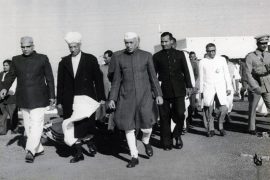As elections beckon, science and technology get a little extra attention from politicians. The reverse is also true: scientists become more aware of the political realities of their profession when a potential political change is on the horizon.
The reasons are obvious. First, scientists need jobs. They must also have the economic support – from the government or industry – for research they would like to pursue. Second, scientists, as citizens, vote and may have some influence on the public perception of governmental policies related to science and technology and science education. Therefore, an objective assessment of the current government’s performance in these sectors is necessary.
The recent success story of Chandrayan-3 was undoubtedly a singular technological achievement for a developing country like India with its unique blend of diversity, democracy, and identity politics. Unfortunately, the political spin that followed, especially on social media, had little to do with facts, history, or any understanding of the importance of a long-term vision for science and technology.
Chandrayan-3 succeeded because behind it lay the experience gained and lessons learnt from Chandrayan-1 and Chandrayan-2. Pokhran I and II in 1974 and 1998, respectively, and ISRO’s Chandrayan-I in 2008 were highly visible symbols of a long-term vision that resulted in our country’s total self-reliance in the strategic sector.
Our capabilities in nuclear and space technology were not achieved overnight. There was a vision and commitment behind them, the same vision that made quality higher education in science and technology an integral part of nation-building.
Most scientists, engineers and administrators who made these success stories possible were educated, trained, and nurtured in state-owned institutions. They led teams of scientists and engineers in environments that were conducive to excellent project management and sharply targeted success.
It was the state that monitored and owned the final outcomes, successes, and failures with patience and perseverance. It should be emphasised that the state again played a stellar role in making the late M S Swaminathan-led Green Revolution a unique success story. Even after half a century, the Green Revolution remains the biggest innovation in the civilian sector, making India self-sufficient in food production.
Over the last seven decades, along with the globalisation of the world economy, India transformed from an economy that prioritised the ‘commanding heights of the public sector’ to ‘trickledown economics’ with little or no regulation. Despite several changes in the government, our electoral democracy ensured that the long-term vision for science and technology in the strategic sector remained largely undiluted.
Therefore, any objective assessment of the current government’s performance must be based not on the success of Chandrayan-3 but, more specifically, on their vision of science and technology as it unfolded over the last decade.
Just before the launch of Chandrayan-3, other science-related announcements were made. Two so-called “mega” science projects on ‘LIGO’ and ‘Quantum technology’ (QT) and the setting up of the National Research Foundation (NRF) were announced.
LIGO, a gravitational wave detector project, has been described by one of its enthusiasts as a ‘mega-science mega dream.’ It has been touted to be a ‘cutting-edge scientific facility’ capable of ‘leapfrogging’ and delivering ‘a sweeping range of cutting-edge technologies.’ The QT project, according to the government, is supposed to benefit communication, health, financial and energy sectors as well as drug design and space applications.
The stated purpose of NRF is to ‘seed, grow and promote research and development (R&D)’ with budgetary support of Rs 50000 crore over the next five years. About 70 per cent of the budget is supposed to come from the private sector.
To emphasise the political power that would guide and patronise it, the management would be headed by no less an individual than the honourable PM.
Since the delusional thinking regarding LIGO and QT is impossible to analyse in a single article, only the basic absurdities concealed within all the fashionable jargon are pointed out here.
Suffice it to say that both these projects are basically aimed at ‘capacity’ building. They belong to what are called curiosity-driven basic science and oriented basic science categories, neither of which automatically delivers technologies. If ever they do, it is more by accident rather than design, and that too only in the long run.
There is nothing tangible on the table right now, barring promises and ‘dreams.’ Colourful phrases such as ‘momentous milestone,’ ‘huge spin-off benefits,’ ‘un-hackable communication ability,’ etc. may be effective for peddling those innovations that harm society and maximise profit, as was done in the name of globalisation, but not innovations that benefit society as a whole.
In so far as the NRF is concerned, given the pathetic track record of the Indian private sector in science and technology, a contribution of 70 per cent by it to NRF’s total budget seems absurdly exaggerated.
There is ample data to show that, currently, the private sector’s contribution to the national expenditure on R&D (which includes both private and public sectors) is only about 38 per cent. This may be compared with the prevailing scenario in both the US and China, where it is about 75 per cent.
One would, therefore, like to know what magical mechanism the PM or his advisers have up their sleeves to jolt the private sector into suddenly waking up to the need for R&D, especially in the higher education sector.
As pointed out earlier, state-owned long-term goals, such as self-reliance, achieved remarkable successes in higher education, science, and technology sectors. The most important point in the context of the present article is that self-reliance, or ‘atmanirbharata,’ the current politically fashionable term, whether total or partial, did not fall from the sky. It was based on a long-term vision that valued evidence-based knowledge and critical thinking – in short, scientific temper.
Scientific temper promoted secularism, humanism, and reform rather than bigotry and superstitions. Scientific temper tells us how to differentiate myth from evidence-based history and how to value India’s traditions, cultural heritage, and unique diversity.
Scientific temper is an integral part of wisdom; it encompasses all knowledge and, most importantly, history. The question we should be really asking is how the present government has performed over the last ten years on that count.
All the above-mentioned projects on science were announced in quick succession over the last few months. Given the obvious limitations and blandness of LIGO, QT and NRF, these announcements seem more of a damage-control exercise and pre-election propaganda.
They came only after NCERT’s ideology-driven revisions of school-level curricula triggered a widespread, indignant response from the academic and scientific communities.
If NCERT had had its way, Darwin’s theory of natural selection would have been permanently dropped in the name of ‘content rationalisation’ at a very basic level of a school student’s exposure to science, while the crucial historical facts related to Gandhi’s assassination in the school texts would be erased forever.
The erasure of the “Theory of Evolution” is hardly surprising since it posits an evidence-based, historical perspective as the central starting point to explain the world around us and our place in it.
The ideological attempts to falsify and obliterate evidence-based history that culminated in the NCERT saga started more than ten years ago. The first sign of the shape of things to come was clear from the assassination more than a decade earlier of Narendra Dabholkar, who tirelessly fought superstitions all his life.
The killing of Govind Pansare, M M Kalburgi, and Gauri Lankesh followed. All four individuals were rationalists, advocates of the scientific temper, and practised what they believed in their daily life.
The systematic undermining of scientific temper at the highest levels started with the outrageous suggestion in 2014 that the elephant head of the Hindu god Ganesh proved that plastic surgery was practised in India 2,000 years ago.
In January 2018, even the minister of state for human resource development, Satyapal Singh, echoed similar sentiments when he said there was “no evidence to prove that the theory of evolution is correct” and that school curricula need to change to reflect this. The consequences of this line of thought did not take long to percolate down to academic institutions, signalling the near-complete destruction of scientific temper.
The baseless affirmations of the IIT Mandi director on the causal connection between the recent natural disasters in Himachal Pradesh and non-vegetarianism, widely reported by the media, probably constitute the most recent and well-known example.
In an electoral democracy, scientists, like all citizens, make political choices, i.e., cast their votes. The choices made by Indian scientists next year will have long-term consequences. The economic and environmental problems facing the nation and the world are unprecedented and cannot be addressed through wishful thinking, demagoguery, or identity politics.
Both science and technology and scientific temper will have critical roles to play if we are to face up to those challenges with a reasonable chance of success. Despite its many aberrations, science and technology in India delivered societal benefits and met our strategic aspirations admirably over the last seven decades because of the foundations on which it drew and continues to do so. The deliberate undermining of scientific temper, if allowed to continue unabated, would most certainly put an end to that.
-30-
Copyright©Madras Courier, All Rights Reserved. You may share using our article tools. Please don't cut articles from madrascourier.com and redistribute by email, post to the web, mobile phone or social media.Please send in your feed back and comments to [email protected]











